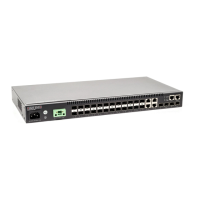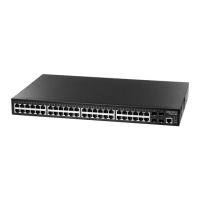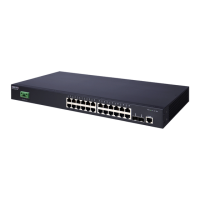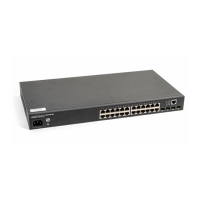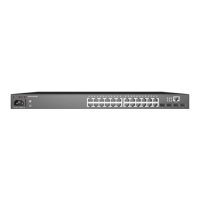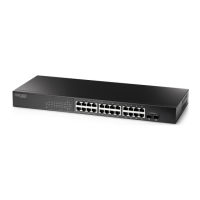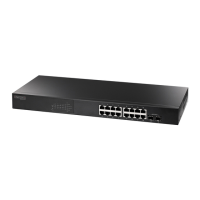Chapter 9
| General Security Measures
Port-based Traffic Segmentation
– 357 –
Command Mode
Global Configuration
Command Usage
◆ Use this command to create a new traffic-segmentation client session.
◆ Using the no form of this command will remove any assigned uplink or
downlink ports, restoring these interfaces to normal operating mode.
Example
Console(config)#traffic-segmentation session 1
Console(config)#
traffic-segmentation
uplink/downlink
This command configures the uplink and down-link ports for a segmented group of
ports. Use the no form to remove a port from the segmented group.
Syntax
[no] traffic-segmentation [session session-id] {uplink interface-list
[downlink interface-list] | downlink interface-list}
session-id – Traffic segmentation session. (Range: 1-4)
uplink – Specifies an uplink interface.
downlink – Specifies a downlink interface.
interface
ethernet unit/port
unit - Unit identifier. (Range: 1)
port - Port number. (Range: 1-28/52)
port-channel channel-id (Range: 1-26)
Default Setting
Session 1 if not defined
No segmented port groups are defined.
Command Mode
Global Configuration
Command Usage
◆ A port cannot be configured in both an uplink and downlink list.
◆ A port can only be assigned to one traffic-segmentation session.
◆ When specifying an uplink or downlink, a list of ports may be entered by using
a hyphen or comma in the port field. Note that lists are not supported for the
channel-id field.
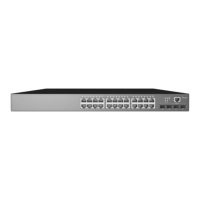
